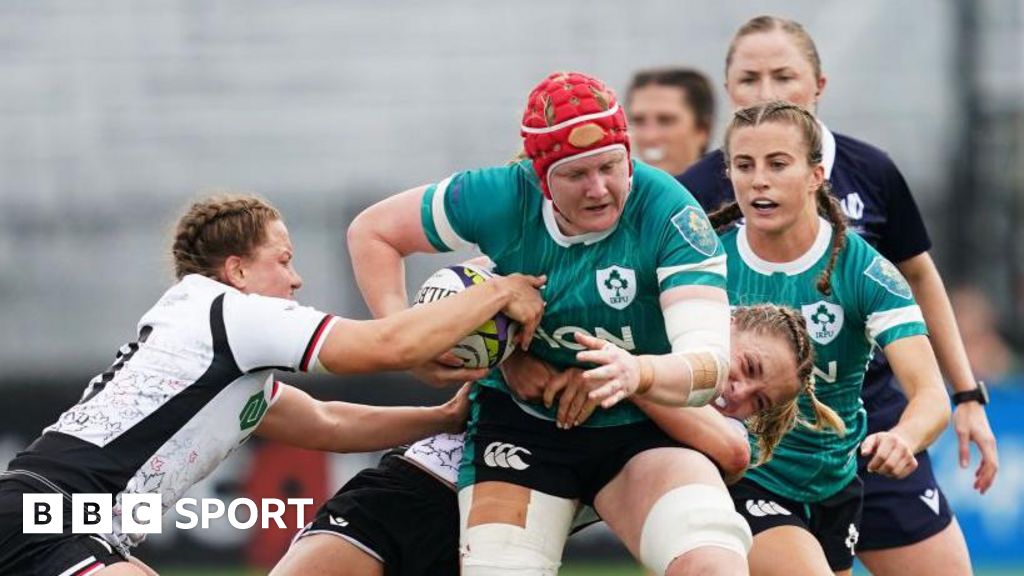In a thrilling encounter at WXV1, Canada defeated Ireland 21-8, securing their second win. This article analyzes the match’s key moments, player performances, and implications for both teams moving forward.
The WXV1 tournament has proven to be a thrilling showcase of rugby talent, and the recent match between Canada and Ireland was no exception. The hosts, Canada, emerged victorious with a score of 21-8, marking their second consecutive win in the tournament. This match not only showcased Canada’s growing strength in women’s rugby but also highlighted some areas of concern for the Irish side.
Canada: A Rising Force
Canada’s performance against Ireland was a testament to their preparation and strategic execution. The team played with confidence and skill, showing that they are serious contenders in this tournament. From the outset, they set the tone with aggressive play and a clear game plan.
One of the standout players for Canada was their captain, who led by example both on and off the field. Her ability to rally the team and make crucial decisions under pressure was evident throughout the match. The Canadian forwards dominated the set pieces, winning several scrums and lineouts, which allowed them to control possession effectively.
Moreover, Canada’s backline displayed impressive speed and agility. The wings were particularly effective in exploiting gaps in the Irish defense, leading to some breathtaking tries. The team’s ability to maintain composure in the red zone, culminating in well-executed tries, illustrated their attacking prowess.
Canada: Taylor Perry; Fancy Bermudez, Shoshanah Seumanutafa, Alex Tessier, Alysha Corrigan; Claire Gallagher, Justine Pelletier; Brittany Kassil, Emily Tuttosi, Alex Ellis; Tyson Beukeboom, Courtney Holtkamp; Pamphinette Buisa, Caroline Crossley, Gabrielle Senft.
Replacements: Sara Cline, McKinley Hunt, Rori Wood, Laetitia Royer, Fabiola Forteza, Julia Omokhuale, Olivia Apps, Julia Schell.
Ireland: A Team in Transition
On the other hand, Ireland faced a tough challenge in this match. Despite having moments of brilliance, they struggled to maintain consistency throughout the game. Their defense, which had been a strong point in previous matches, was tested significantly by Canada’s relentless attack.
One of the critical areas for Ireland was their inability to convert opportunities into points. They had periods of possession but failed to capitalize, resulting in a lack of scoring pressure on the Canadian side. The Irish forwards worked hard to reclaim possession, but they often found themselves on the back foot against a more physical Canadian pack.
Furthermore, Ireland’s decision-making under pressure was questionable at times. Several turnovers occurred when they attempted to force plays rather than sticking to their game plan. This lack of composure in crucial moments cost them valuable scoring chances and allowed Canada to extend their lead.
Ireland: Stacey Flood; Eimear Considine, Eve Higgins, Enya Breen (capt), Amee-Leigh Murphy Crowe; Dannah O’Brien, Emily Lane; Niamh O’Dowd, Clíodhna Moloney, Linda Djougang, Dorothy Wall, Fiona Tuite, Erin King, Aoife Wafer, Brittany Hogan
Replacements: Neve Jones, Siobhán McCarthy, Andrea Stock, Grace Moore, Deirbhile Nic a Bháird, Molly Scuffil-McCabe, Nicole Fowley, Aoife Dalton
Key Moments in the Match
Several pivotal moments defined this encounter, showcasing the highs and lows for both teams.
- Early Dominance by Canada: Right from the kickoff, Canada made their intentions clear. Their early try set the stage for a confident performance and put immediate pressure on the Irish team. This early score established momentum and a psychological edge.
- Ireland’s Response: Following Canada’s opening try, Ireland rallied with some impressive phases of play. They managed to respond with a penalty, which demonstrated their resilience. However, this response was short-lived as Canada quickly regained control.
- Turning Point: One of the match’s crucial turning points came when Canada successfully defended a sustained Irish attack. The ability to absorb pressure and turn the ball over showcased their defensive capabilities, stifling any momentum Ireland had built.
- Second Half Surge: As the second half progressed, Canada continued to apply pressure. Their second try, scored after a brilliant break from their midfield, was a showcase of their speed and tactical awareness. This score effectively put the match beyond Ireland’s reach.
Looking Ahead: Implications for Both Teams
As Canada celebrates their victory, they must remain focused on the upcoming challenges in the tournament. Their performance against Ireland showcased their potential, but consistency will be key. To be considered serious title contenders, they must maintain this level of performance against stronger opponents.
For Ireland, the loss serves as a wake-up call. They have shown glimpses of talent but need to harness that potential to compete at the highest level. The coaching staff will need to address the issues observed during the match, particularly around decision-making and execution in the attacking phase.
Conclusion
The match between Canada and Ireland in WXV1 was a fascinating contest that highlighted the strengths and weaknesses of both teams. Canada emerged as clear contenders in the tournament, showcasing a blend of physicality, skill, and tactical awareness. In contrast, Ireland must regroup and refocus to address the shortcomings that were laid bare during this match.
As the tournament progresses, fans can expect to see how both teams adapt and evolve in their pursuit of success. Canada’s victory reaffirms their status as a rising force in women’s rugby, while Ireland must harness their potential to ensure they remain competitive on the world stage.
Referee: Aimee Barrett-Theron (South Africa)
